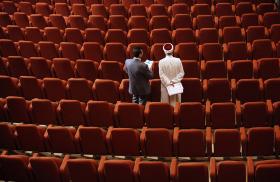When Secretary of State Colin Powell and former President George Bush touch down in Kuwait on Sunday, celebrations scheduled to commemorate the expulsion of Saddam Husayn’s forces ten years ago will also—albeit less explicitly—recognize the more robust state of Gulf militaries. A decade after Operation Desert Storm, each of the six states comprising the Gulf Cooperation Council (GCC)—Bahrain, Kuwait, Oman, Qatar, Saudi Arabia, and the United Arab Emirates (UAE)—possess armed forces that are not just more modern, but larger than ever before:
Table I. GCC Military Inventory
|
Tanks |
Artillery |
Combat Aircraft |
Armored Vehicles |
Warships |
|
|
1990/91 |
1,155 |
755 |
414 |
3,304 |
8 |
|
2000/01 |
2,038 |
1,030 |
692 |
5,178 |
7 |
These numbers, however, offer little indication of potential battlefield performance—actual capability in wartime is a function of various factors that include training, leadership, doctrine, and tactics. Indeed, some of the weaponry represented by these figures may not be operational due to lack of support, spare parts, and trained personnel. CSIS scholar Anthony Cordesman has stressed the fact that these types of numbers are not all-telling: "In general, Southern Gulf military spending is extremely wasteful, lacking in interoperability and standardization, emphasizes weapons numbers and ‘glitter factors’ over overall systems integration, fails to adequate[ly] fund sustainability and maneuver capability, and underfunds advanced training."
Saudi Arabia, Kuwait, Bahrain, and the UAE have significantly expanded as well as modernized their inventories. In fact, the United Arab Emirates is scheduled to start taking delivery of eighty state-of-the- art F-16 fighters this year, planes produced specifically for the UAE. Oman and Qatar, on the other hand, seem to have limited their efforts to modernizing their forces. The table below illustrates these trends in greater detail. (All of the figures have been drawn from 1990/1990 and 2000/2001 editions of The Military Balance,published by the International Institute for Strategic Studies).
Table II. Military Inventory 1991-2001; State-by-State
|
Country |
Year |
Tanks |
Artillery |
Combat Aircraft |
Armored Vehicles |
Major Surface Combatants |
|
Bahrain |
1991/2001 |
54/106 |
22/98 |
24/34 |
103/365 |
0/1 |
|
Kuwait |
1991/2001 |
245/385 |
72/59 |
35/82 |
675/495 |
0/0 |
|
Oman |
1991/2001 |
75/117 |
75/115 |
57/40 |
8/183 |
0/0 |
|
Qatar |
1991/2001 |
24/44 |
14/40 |
18/18 |
198/212 |
0/0 |
|
S. Arabia |
1991/2001 |
550/1055 |
475/448 |
189/417 |
1780/2870 |
8/4 |
|
UAE |
1991/2001 |
207/331 |
97/270 |
91/101 |
540/1053 |
0/2 |
|
TOTAL |
1991/2001 |
1155/2038 |
755/1030 |
414/692 |
3304/5178 |
8/7 |
Significant growth has occurred in all countries and nearly every category of weaponry, despite the retirement in many cases of older or obsolete models.
Table III. Qualitative Military Inventory 1991-2001
|
Tanks |
Aircraft |
|
|
Med-High Quality/Low Quality |
Med-High Quality/Low Quality |
|
|
Bahrain |
106/0 |
22/12 |
|
Kuwait |
368/17 |
54/28 |
|
Oman |
117/0 |
12/28 |
|
Qatar |
0/44 |
12/6 |
|
Saudi Arabia |
765/290 |
266/151 |
|
UAE |
286/45 |
45/56 |
|
TOTAL |
1642/396 |
411/281 |
As illustrated in Table III, approximately 80 percent of the GCC’s tanks are of medium or high quality. Aircraft fleets, on the other hand, are considerably outdated—nearly 70 percent of the models are "low quality," despite the addition of newer models to regional air forces throughout the last decade. As for armored vehicles and artillery inventories not represented in the table above, procurement has outpaced modernization efforts. Finally, warships have played only a marginal role, with modernization clearly characterizing the evolution of naval inventories.
For the purpose of strategic deterrence, Saudi Arabia and the UAE have long possessed Chinese CSS-2 and Soviet Scud-B missiles, respectively. None of the GCC states are thought to have acquired weapons of mass destruction (WMD). However, most of the countries comprising the GCC possess well-developed petro-chemical industries that could provide a basis for a modest chemical weapon capability in the future, should they decide to do so—perhaps in response to an Iranian or Iraqi nuclear breakout.
The Gulf Cooperation Council is better equipped in 2001 than it was in 1991, but serious questions remain as to whether or not these impressive inventories can translate into dividends on the battlefield. If Saddam tests the waters with more than routine saber rattling, or Iran experiments with its own military might, the Gulf monarchies will find out if indeed size matters.
Michael Moskowitz is a research assistant at The Washington Institute.
Policy #519


